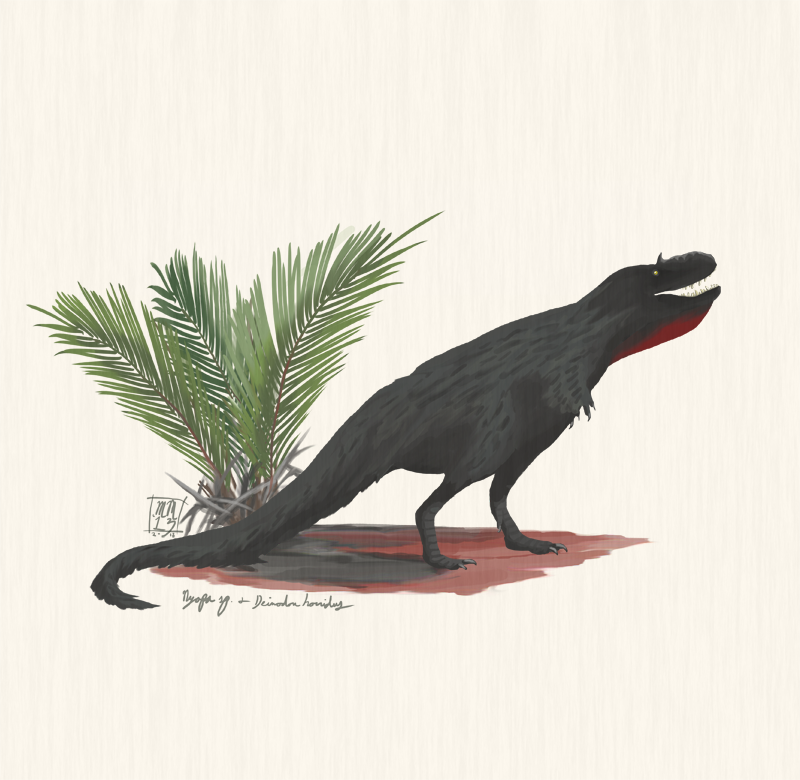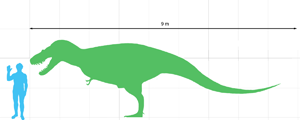home > natural history
Gorgosaurus libratus
"balanced gorgosaur"

There are two different types of tyrannosaur present in the the late Campanian Judith River/Dinosaur Park Formation ecosystem of Montana and Alberta, and they are currently going under four different names. Two of the names are based on teeth alone: Deinodon horridus and Aublysodon mirandus. A. mirandus teeth are incisors from a juvenile tyrannosaur, and they match most (but not all) characteristics from a subadult specimen referred to Daspletosaurus torosus, a slightly older species from the Oldman Formation (interestingly, A. mirandus teeth also have some but not all features present in teeth of the later Tyrannosaurus rex, making it possible that it's an intermediate species between the two). Skeletal material has been referred to Daspletosaurus sp. from the Dinosaur Park, but doesn't really need a new specific name--A. mirandus is available and probably the same species.
Deinodon horridus is a bit more problematic, since there is a named tyrannosaur from the Dinosaur Park known from good skeletal material--Gorgosaurus libratus. Most authors have conceded that these two are almost certainly synonymous, though the presence of Daspletosaurus sp./Aublysodon mirandus makes this tricky. Some authors have also referred A. mirandus to D. horridus as a junior synonym, but as one is based on juvenile teeth that seem to have more in common with tyrannosaurines than with albertosaurines, this seems unlikely. As far as I know, no work has been done to tell whether or not tyrannosaurine and albertosaurine adult lateral teeth can be differentiated or not. Until then it remains possible that Aublysodon mirandus is the juvenile form of Deinodon horridus, and that both are tyrannosaurines. However, since most modern sources seem to make Deinodon a potential synonym of Gorgoaurus and Aublysodon of Daspletosaurus, I've followed that here.
This illustration is based on the holotype specimen of Gorgosaurus libratus. I depicted it in a very old-fashioned way, in a tripodal stance. All studies on dinosaur biomechanics published since the 1970s agree that theropods probably walked with the vertebral column near-horizontal, but the key word there is "walked." This big displaying male is standing still!
.
Image Details:
Media: Digital, Adobe Photoshop CS5 with WACOM Bamboo
License: ALL RIGHTS RESERVED
DESCRIPTION
Length: 9m (30ft)
Weight: 2.4t
Location: Dinosaur Park Formation, Montana
Time: Campanian age, Late Cretaceous (75ma)
